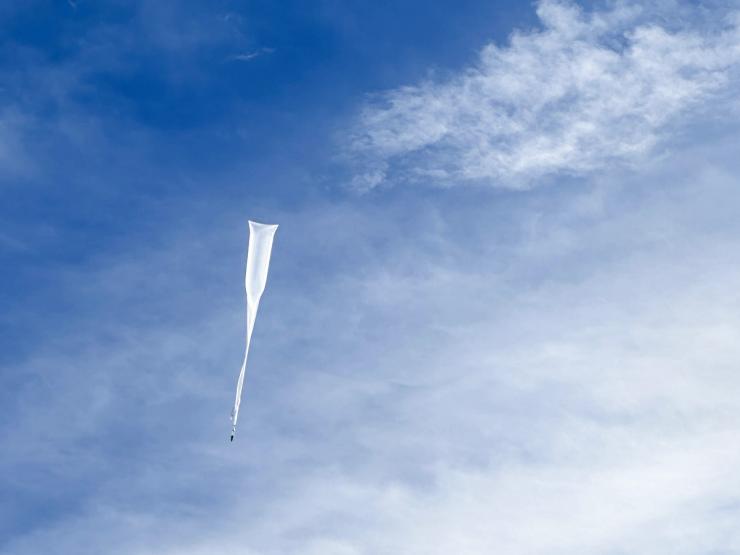The Scoop
A Silicon Valley weather startup will soon begin replacing National Oceanic and Atmospheric Administration weather balloons with AI-powered alternatives, a cost-cutting measure brought on by severe budget cuts carried out by the Trump administration.
WindBorne, founded in 2019 by a team of Stanford graduates, can provide valuable weather balloon data for a fraction of the cost by keeping the balloons in the sky for weeks using a combination of off-the-shelf computer parts and novel software. Traditional weather balloons operated by NOAA are only used for a single day before they pop and return to Earth.
The move comes after Elon Musk’s Department of Government Efficiency pushed for a roughly 25% reduction in the agency’s budget, forcing staff cuts and a shutdown of programs.
The agency is the primary source of weather forecasting for everything from emergency services to the Apple Weather app. Weather balloons play a crucial role in forecasting, collecting data for prediction models that can’t be gathered from the ground or space.
Since March, NOAA has been slashing the number of daily weather balloon flights that go up daily from multiple locations, leading to reductions in forecasting capabilities.
WindBorne, which says it operates the largest fleet of deployed weather balloons in the world, was already providing data to NOAA. But John Dean, co-founder and CEO of WindBorne, told Semafor the agency had been hesitant under previous administration to expand its partnership, despite the possibility of cutting costs.
WindBorne’s balloons have a higher initial cost than NOAA’s, but because they stay up in the air much longer, they can gather data at a lower overall cost.
The balloons are equipped with satellite connectivity. Tiny motors control the contents of a small bag of sand used for ballast on the balloon. Once up in the air, the balloon can release sand to control its elevation and enter different wind currents. Artificial intelligence figures out how to use elevation to steer over specific locations where data is needed.
The result is an AI-powered weather prediction model that is currently among the best in the world. The company plans to ultimately have 10,000 balloons in the air at any given time, allowing it to cover the entire planet.
Currently, the data gathered by its 50 to 60 balloons in the air is bought by traders sweeping up data that might affect the prices of energy and other commodities.
In this article:
Reed’s view
In this case, Musk’s DOGE may be delivering on its stated promise, as the budget cuts at NOAA may end up improving the agency’s ability to predict the weather.
Dean told me that NOAA went from a hands-off approach to the private sector under the Biden administration to one that is eager for partnerships. While he called some of the DOGE cuts “reckless,” he said the end result in this case may actually be a positive. “It’s created chaos that, long term, will probably get us more data,” he said.
In everything from the military to NOAA, the government’s contracting with the private sector is broken, captive to the small set of contractors who have turned winning and keeping government contracts into its own sector of the economy. The WindBorne deal puts NOAA into more direct contact with Silicon Valley’s innovative startups.
The media, meanwhile, has found immediate harm done by some of Trump’s dramatic cuts, particularly cuts to aid programs unpopular with the MAGA base. But we should keep an eye out for places where Musk’s thesis — that things can be done far better and more cheaply with technology — is justified.
Room for Disagreement
Experts told PBS News that the NOAA cuts could be disastrous for public safety:
“No one can predict when any office gets stretched so thin that it will break, but these numbers would indicate that several of them are there or getting close, especially when you factor that large segments of the country are facing oncoming threats of severe weather, flooding rains while others are facing ominous significant fire risks,” former National Weather Service chief Louis Uccellini told the outlet.
Notable
- One area where NOAA has aggressively cut is climate research, a move that seems to have been driven by politics more than government efficiency, Bloomberg reports.


